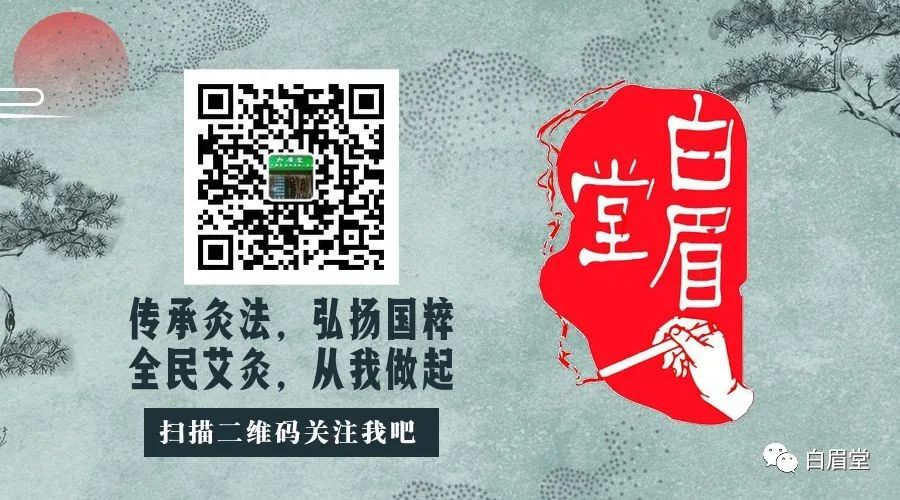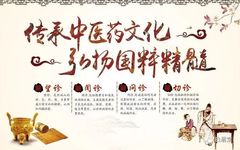
The four diagnostic methods are the primary means of collecting clinical data, which requires objectivity, accuracy, systematic approach, comprehensiveness, and emphasis on key points. This necessitates the use of “four diagnostics in combination,” “four diagnostics given equal weight,” and “four diagnostics referenced together.”
The Four Diagnostics
Observation refers to observing the complexion
Listening refers to hearing the sounds and smelling the odors
Inquiry refers to asking about symptoms
Palpation refers to feeling the pulse
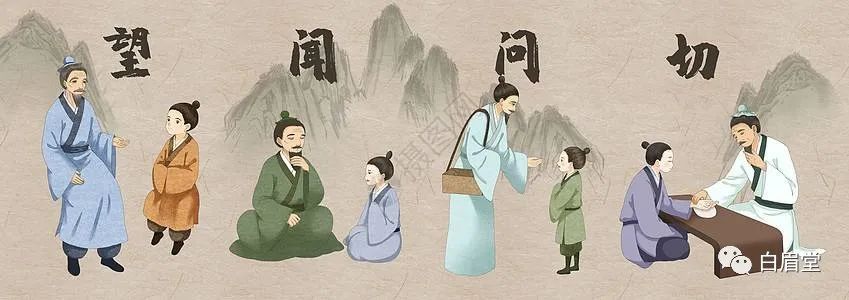
The traditional method of diagnosing diseases in TCM is completed through the integration of the four diagnostics. Observation involves examining the patient’s development, complexion, tongue coating, expressions, etc.; Listening involves hearing the patient’s speech, cough, wheezing, and detecting bad breath or body odor; Inquiry involves asking the patient about their symptoms and any previous illnesses; Palpation involves feeling the pulse or pressing the abdomen for masses. This is known as the four diagnostics.
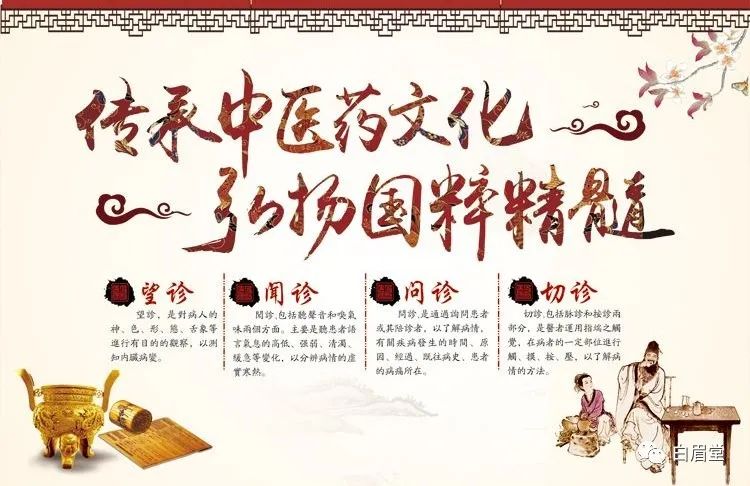
The “four diagnostics” in TCM is the most fundamental skill and also the most profound one, originating from the sixty-first difficulty in the Nanjing. (Nanjing, originally named Huangdi’s Eighty-One Difficulties, is one of the ancient Han medical texts, said to be authored by the famous folk doctor Bian Que from the Warring States period. Bian Que, whose surname was Qin and given name was Yue, was a well-known folk doctor during the Warring States period, revered as a divine physician. The earliest foundational figure of the four diagnostics is Bian Que.)
It is said: The classics state, “To know by observation is called divine, to know by listening is called sage, to know by inquiry is called skilled, and to know by pulse diagnosis is called clever. What does this mean?”
Thus: To know by observation means to see the five colors to understand the illness. To know by listening means to hear the five sounds to differentiate the illness. To know by inquiry means to ask about the five tastes to understand the origin of the illness. To know by pulse diagnosis means to examine the cun position, observing its vacuity and solidity to understand the illness and which organ is affected. The classics say, knowing externally is called sage, knowing internally is called divine; this is what it means.
The earliest use of the four-character phrase should be found in Gujin Yitong: “The four characters of observation, listening, inquiry, and palpation are indeed the guidelines for medicine.”
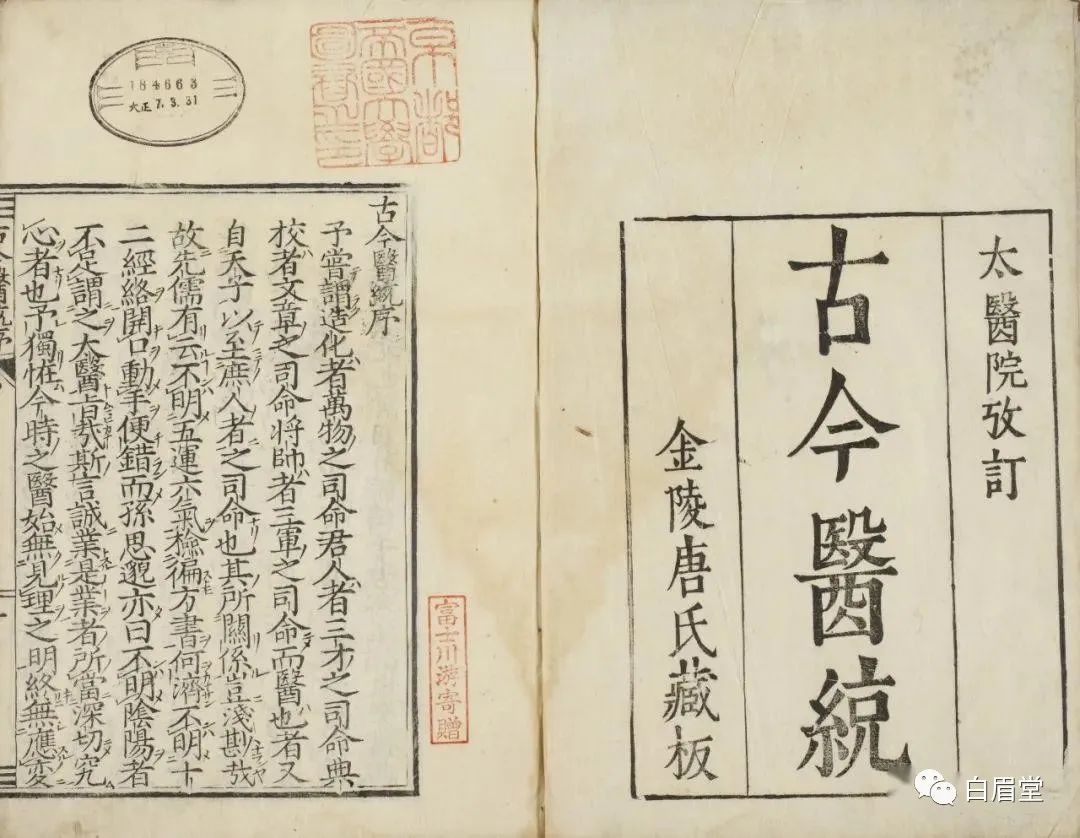
This article specifically elaborates on the observation diagnostic method.
Observation involves purposeful examination of the patient’s spirit, color, shape, state, and tongue appearance to assess internal organ changes. Through extensive medical practice, TCM has gradually recognized that the external body, especially the face, tongue quality, and tongue coating, are closely related to the internal organs. If there are changes in the yin-yang and qi-blood of the internal organs, it will inevitably reflect on the body surface. As stated in the Ling Shu: Ben Zang chapter: “By observing the external manifestations, one can know the internal organs and thus understand the illness.”
TCM observation specifically refers to examining the five senses, looking at the tongue, mouth, nose, and ears, checking if the eyes are bright, if the sclera is abnormal, if the tongue is too red, if the tongue coating is too thick, the color of the tongue coating is white or yellow, if there is inflammation in the oral cavity, if the color is too red or too white, if the nose has rhinitis, if the nasal discharge is thin or thick, and the color is yellow or white, and the shape and condition of the ears, mainly observing the thickness of the ear helix, as a thicker helix indicates better kidney health, and checking for tinnitus or ear infections. Note: The liver governs the eyes, the heart governs the tongue, the spleen governs the mouth (lips), the lungs govern the nose, and the kidneys govern the ears.
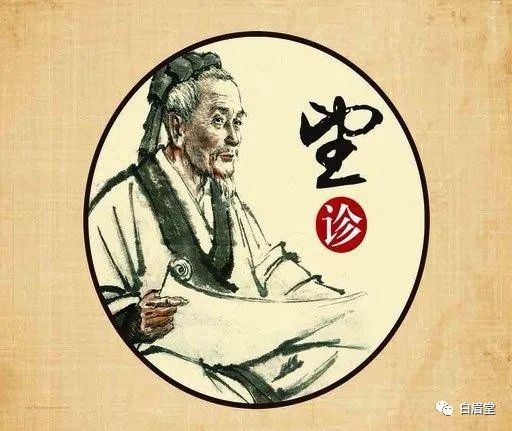
The analysis is as follows: Discomfort in the eyes indicates liver issues, problems with the tongue indicate heart issues, issues with the lips indicate spleen issues, problems with the nose indicate lung issues, and issues with the ears indicate kidney issues. However, there are subdivisions in the eyes and tongue; within the eyes, there are specific distinctions between the pupil and the sclera. The pupil reflects liver issues, such as myopia or blurred vision, which can be treated by nourishing the liver. Many have successfully treated myopia through liver nourishment (which is generally not treatable in Western medicine).
The sclera corresponds to the heart and lungs; if the sclera is red, it indicates that heart fire is heated, causing inflammation and congestion of the scleral capillaries. The edges of the tongue reflect heart issues; if the tongue is red, it indicates heart fire, requiring fire reduction and heart nourishment. The tongue coating reflects spleen and stomach issues; if the coating is yellow, it indicates excessive spleen and stomach fire, while a white coating indicates cold in the spleen and stomach, requiring nourishment of the stomach and spleen.
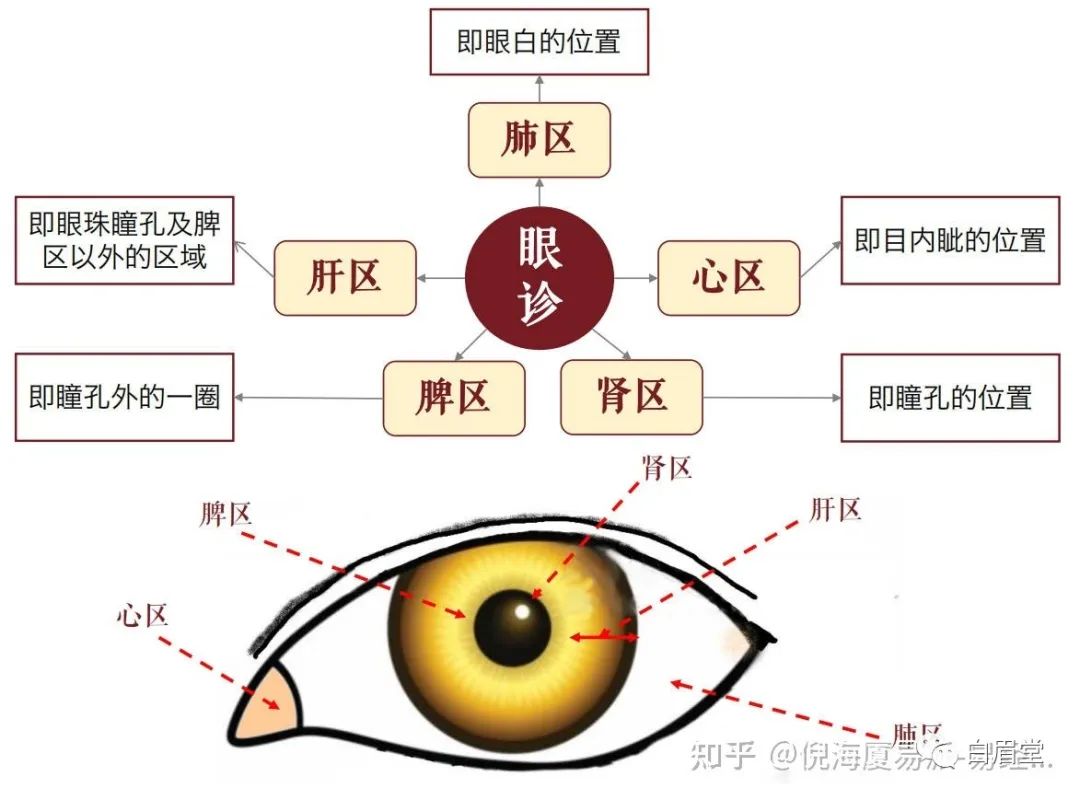
In simple terms, observation includes general observation and tongue diagnosis. General observation includes observing the spirit, color, and shape of the five senses, while tongue diagnosis includes examining the tongue quality and tongue coating. Observation first focuses on the spirit; the spirit reflects the life activities of the body, such as clear consciousness, coherent speech, bright eyes, and quick responses, which are termed as having spirit, indicating health or mild illness. Conversely, lethargy, dull expression, dim eyes, slow responses, or even unclear consciousness are termed as lacking spirit, indicating a more severe condition. By observing the spirit, one can estimate the patient’s condition and prognosis, keeping it in mind.
The observation of color mainly examines the facial color and luster; different colors can indicate the state of qi and blood and the progression of diseases. A normal Chinese person’s complexion is slightly yellow and rosy; if abnormal colors appear, they are termed as disease colors, commonly seen as: White indicates deficiency, cold, or blood loss; Yellow indicates deficiency or dampness; Blue indicates cold, stasis, or pain, and is often seen in children with convulsions; Red indicates heat; Black indicates kidney deficiency.
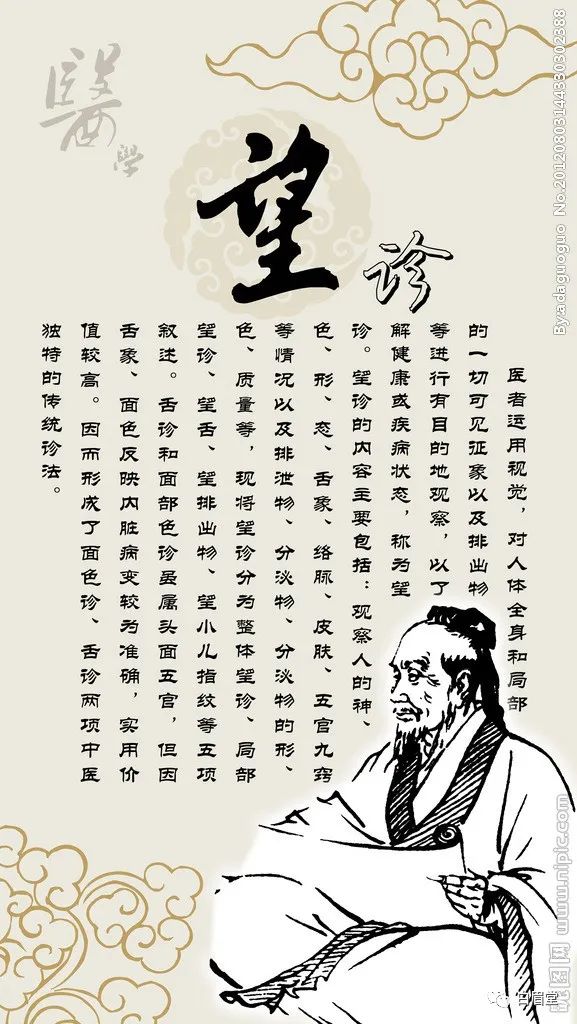
Observation of shape refers to observing the body shape and dynamics ; for example, being overweight with little appetite indicates spleen deficiency with phlegm. Being thin and hungry indicates fire in the stomach. Lying down and preferring quietness often indicates a cold syndrome. Restlessness and a preference for movement often indicate a heat syndrome. Opening the mouth and raising the shoulders, unable to lie flat indicates wheezing; stiffness in the neck and back, with arching of the back indicates convulsions; chronic illness with a tendency to touch clothing or the bed, and pulling at empty threads indicates critical conditions.
TCM experience holds that the five organs open to the five senses , and the five senses correspond to the five organs ; by observing the five senses, one can understand certain internal organ changes, such as red and swollen eyes , which often indicate liver fire or wind heat; both eyes rising, direct or oblique gaze indicates internal liver wind; dry and black ear helix indicates kidney essence depletion; flaring nostrils indicate evil heat trapped in the lungs; swollen gums or bleeding indicate excessive stomach heat.
Tongue diagnosis is a unique method of disease observation accumulated through long-term practice in TCM, mainly observing tongue quality and tongue coating. The tongue quality is the muscular part of the tongue, while the tongue coating is the coating attached to the tongue surface. The tongue quality can reflect the vacuity or solidity of the five organs, while the tongue coating can indicate the depth of external evil invading the body; a normal person has a light red tongue with thin white coating.
If the tongue quality is pale, it indicates deficiency or cold; if the tongue quality is red, it indicates heat; if the tongue is purple, it indicates blood stasis; if the coating is white, it indicates exterior syndrome or cold syndrome; if the coating is yellow, it indicates interior syndrome or heat syndrome; if the coating is thick and greasy, it indicates damp heat or phlegm heat; if the coating is thin, it indicates a mild condition, while if the coating is thick, it indicates a severe condition; if the tongue coating changes from thin to thick, it indicates disease progression, while if it changes from thick to thin, it indicates disease regression. In clinical practice, the changes in tongue quality and tongue coating are usually correlated for comprehensive judgment. TCM experience generally states that acute diseases are reflected more accurately by the tongue, while chronic diseases are reflected more accurately by the pulse, as the tongue can more accurately and timely reflect the physiological and pathological conditions of the body. Proficient use of observation allows for quick and accurate diagnosis of diseases, hence TCM states, “To know by observation is called divine.”
Observing the five senses to understand the five organs
According to TCM’s “holistic theory,” the “five senses” (mouth, eyes, ears, nose, tongue) on the face are closely related to the health status of the “five organs” (heart, liver, spleen, lungs, kidneys). 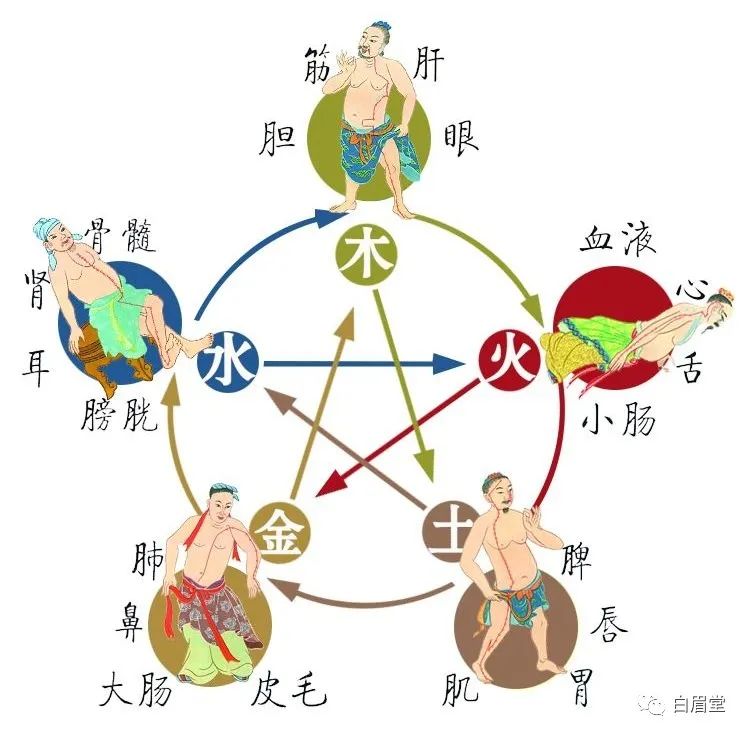
The mouth is the gateway for food intake, thus related to the spleen and stomach. From the appearance of the lips, one can observe some spleen and stomach issues. For example, dark lips may indicate spleen and stomach deficiency and cold; overly red lips may indicate fire in the spleen and stomach; pale lips may indicate insufficient qi and blood, malnutrition, anemia, or weakened spleen and stomach function; if the corners of the mouth are ulcerated, it may be due to excessive heat in the spleen and stomach.
The nose is the passage and organ for breathing, thus related to the lungs. If the nose appears very red, it may indicate lung heat or excessive internal fire. Nosebleeds or abnormal dryness may indicate insufficient yin energy in the body and excessive yang energy.
The eyes are the most important sensory organs; as the saying goes, “the liver opens to the eyes,” the eyes are closely related to the liver. Liver diseases will manifest in the eyes, showing yellowing of both eyes and bluish corners. Blurred vision may be related to insufficient liver blood; if the eyes appear red and swollen, it may be due to excessive liver fire; if the eyes are dry, it may be due to insufficient yin blood.
The ears are the auditory organs; in the Huangdi Neijing, it is stated that “the kidneys open to the ears,” thus individuals with kidney diseases may experience symptoms such as deafness or tinnitus; conversely, if hearing is sharp, it indicates good kidney health.
The tongue is the organ of taste, related to the heart. If the tip of the tongue is very dark, it may indicate heart fire; if there are blood stasis or spots, it may indicate poor blood circulation; if the tongue has sores, it may indicate excessive heart fire, related to diet and mood. Some heart diseases may also lead to tongue immobility or curling.
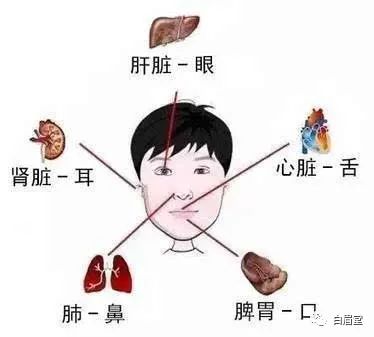
In fact, besides the five senses, changes in the color of the area between the eyebrows, under the cheekbones, beside the nose, and at the philtrum can also indicate bodily issues. Professor Yang Li from the Chinese Academy of Traditional Chinese Medicine states that if the area between the eyebrows appears pale and dull, it may indicate lung deficiency; the area beside the nose is related to the small intestine; if this area appears yellow and lacks luster, it may indicate spleen and stomach deficiency; the area under the cheekbones is related to the kidneys; if it appears dark, it may indicate kidney issues; the philtrum, located below the nostrils, is related to the reproductive organs and bladder; if it appears dark, it may also indicate kidney deficiency.
Of course, subtle changes in complexion are often difficult to discern, so once noticeable changes occur in certain areas of the face, it may indicate a more serious problem, and one should seek medical attention to avoid delaying treatment.
The Principle of Tongue Coating Observation
The tongue is the external manifestation of the stomach, used to transport food into the esophagus and stomach. The tissue of the tongue is connected to the fifth pair of cranial nerves, and its function relies entirely on the movement of these nerves. The two purple-blue veins under the tongue are the pathways of the Shaoyin kidney meridian, known as Jin Jin and Yu Ye, which produce saliva to moisten the tongue quality. Understanding the diagnostic recognition must be precise, as even a small error can lead to significant consequences; this principle cannot be overlooked. The surface of the tongue is covered with numerous tiny papillae, which are not easily seen; thus, the coating can change three times a day, referred to as active coating, indicating no disease.
The reason for these changes is that when food enters the stomach, it brings in corrupt and turbid qi, which is then expelled downwards, causing the coating color to recede; as the food decomposes, the turbid qi rises, causing the coating color to reappear. If there is no corruption in the stomach, the coating will be thin and sparse; if the corrupt qi cannot rise, it may temporarily appear white; blue is an absolute color; a greenish color on the tongue indicates a critical condition. There are also various shades that appear similar to yellow or white, which are categorized for future reference by learners.
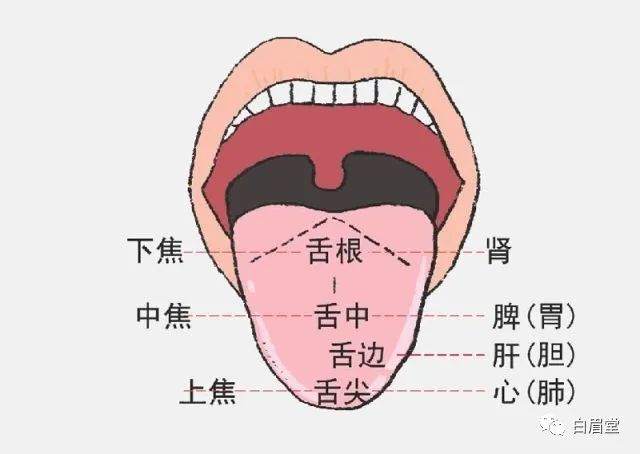
Differentiating Disease by Observing Phlegm
Traditional medicine differentiates diseases based on the color, quality, and quantity of phlegm expelled during coughing, which can be broadly categorized into six types. Phlegm retention in the body not only allows pathogens to grow and reproduce in the respiratory tract, leading to worsening inflammation, but also obstructs the bronchi, causing hypoxia and difficulty breathing.
1. Cold Phlegm in the Lungs
The phlegm expelled is white, clear, and thin; the patient feels cold, with cold limbs, severe chills, mild fever, cough with chest pain, wheezing, and a pale complexion.
2. Hot Phlegm in the Lungs
The phlegm expelled is yellow, thick, and may contain blood; symptoms include fever, cough, chest pain, wheezing, flushed face, red eyes, sore throat, thirst, dry lips, short and red urine, and dry constipation, with a red tongue and yellow coating.
3. Wind Evil Invading the Lungs
The phlegm is clear, thin, and foamy, accompanied by fever, chills, cough, nasal congestion, runny nose, dry and itchy throat, body aches, red tongue edges, and thin white coating.
4. Yin Deficiency and Lung Dryness
The phlegm is scant, thick, and difficult to expel, possibly with blood. If caused by dryness, symptoms include fever, chills, chest pain, dark lips, dry nose, dry throat, and thirst. If caused by yin deficiency, symptoms include restlessness, insomnia, tidal fever, night sweats, and red tongue with little coating.
5. Damp Evil Invading the Lungs
The phlegm is abundant, white, slippery, and easy to expel; symptoms include heavy limbs, dizziness, lethargy, and poor appetite.
6. Damp Heat Trapped in the Lungs
The phlegm is thick, foul-smelling, or contains blood; symptoms include high fever or tidal fever, chest tightness and pain, difficulty lying down, dry mouth and throat, and restlessness.
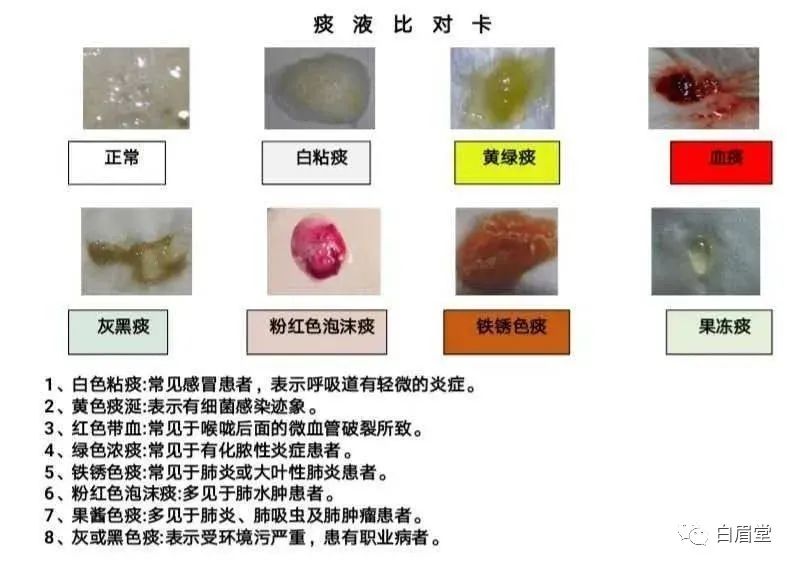
Through observation, TCM can treat diseases at their onset; when there is even a slight change in the internal organs, the physician can detect it and begin clinical treatment. Once the pathogenic qi is eliminated, the treatment can conclude.
How to Practice Observation
TCM genius Ni Haixia tells us that to practice observation, we must often train our eyesight; our vision must be excellent. For example, years ago, a master taught his disciple to practice vision by using colored strings of red, yellow, white, and black, tying them into a thick string, and then in dim light, even with a small candle, the master would say: “Pick out the brown one, pick out the blue one, pick out the black one…” If you practice well, you can distinguish the colors accurately. Then, even in dim light, like the flame of an incense stick, you can still distinguish correctly; this is developed through long-term practice, which is the essence of observation.
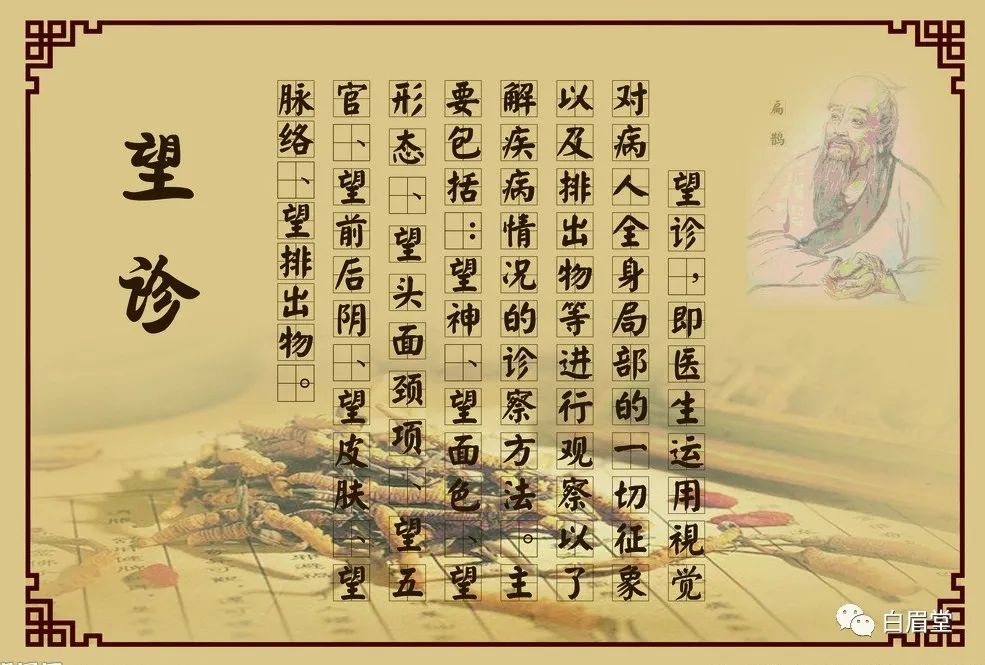 ○ Some images and texts are sourced from the internet, copyright belongs to the original author ○○ If there is any infringement, please contact for deletion ○
○ Some images and texts are sourced from the internet, copyright belongs to the original author ○○ If there is any infringement, please contact for deletion ○